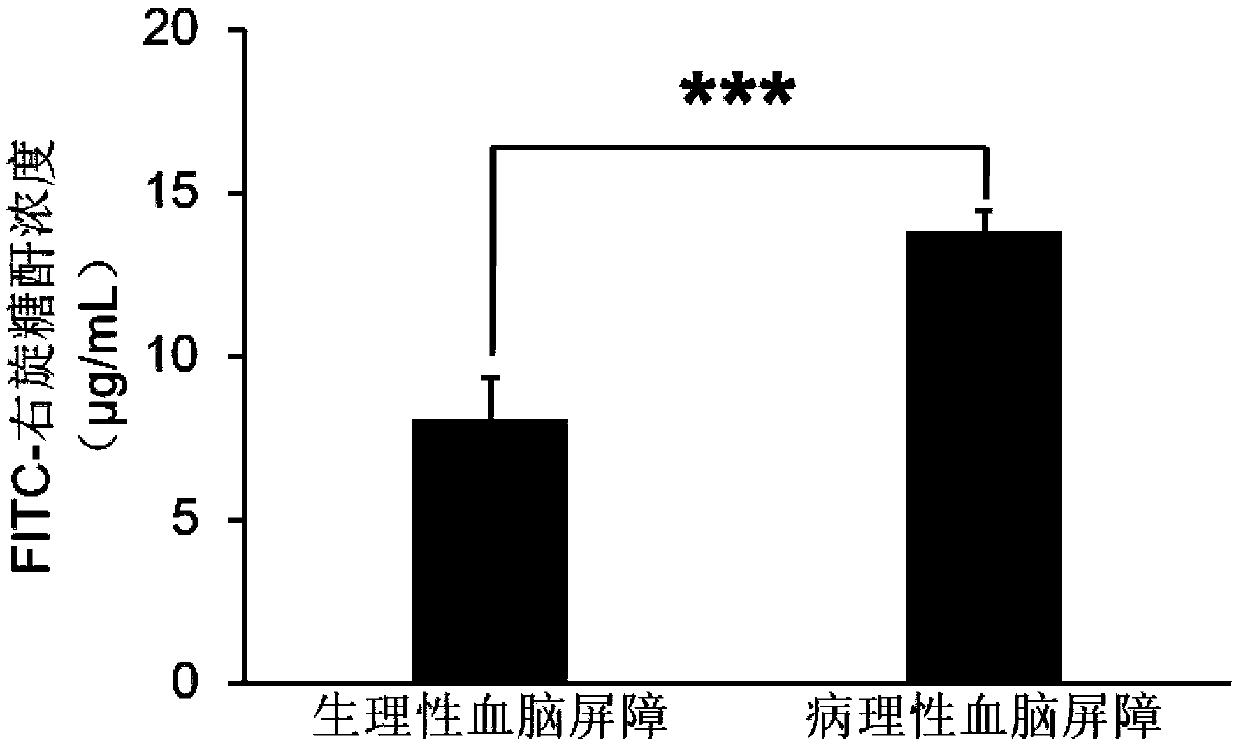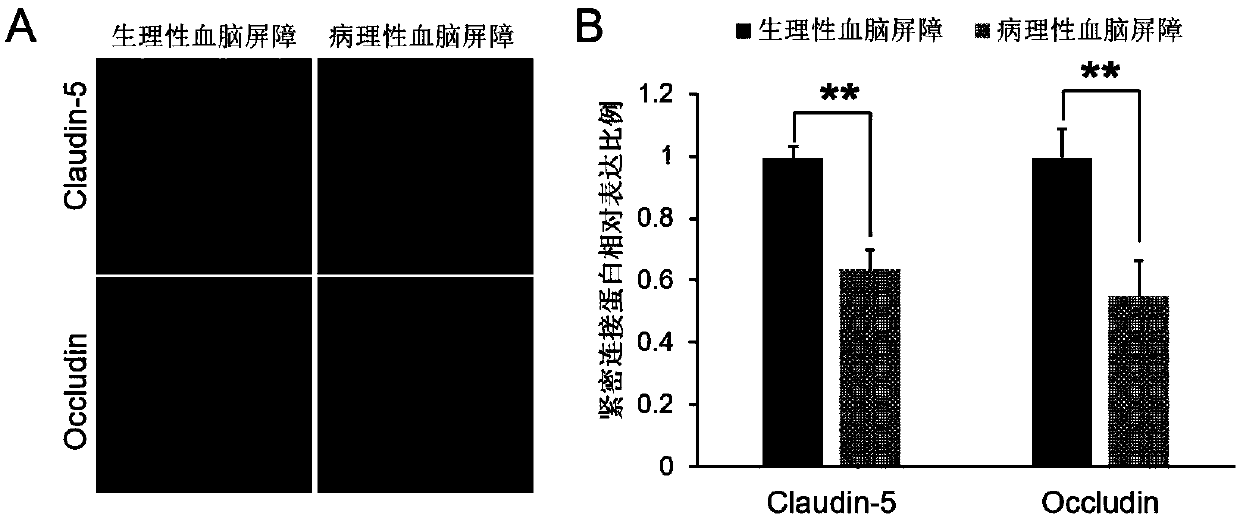Use of axitinib and analogue thereof in preparation of blood-brain barrier permeability regulating agent
A technology of blood-brain barrier and axitinib, applied in the field of application of axitinib and its analogs in the preparation of blood-brain barrier permeability regulators
- Summary
- Abstract
- Description
- Claims
- Application Information
AI Technical Summary
Problems solved by technology
Method used
Image
Examples
Embodiment 1
[0054] Example 1 The growth of brain glioma causes pathological damage to the blood-brain barrier and increases the permeability
[0055] 1. Physiological blood-brain barrier cell model construction
[0056] Brain microvascular endothelial cells bEnd.3 were used as blood-brain barrier model cells, and 1×10 5 For cell density per well, 0.5 mL of well-grown bEnd.3 cell suspension was inoculated in a 12-well Transwell plate chamber with a pore size of 0.4 μm, and 1.5 mL of fresh culture medium was added to the outer chamber. Replace the fresh medium every other day, and continue to incubate for 15 days at 37°C and 5% carbon dioxide. When the cell transmembrane resistance value is greater than 150 ohm·square centimeter (Ω·cm 2 ), a physiological blood-brain barrier cell model was obtained for evaluation.
[0057] 2. Pathological blood-brain barrier cell model construction
[0058] U87MG glioma cells were used as brain tumor model cells, and 2×10 5 For the cell density per...
Embodiment 2
[0067] Example 2 Axitinib acts on the vascular endothelial growth factor receptor (VEGFR), blocking the binding of vascular endothelial growth factor (VEGF) to the receptor in a dose-dependent manner
[0068] Taking the physiological blood-brain barrier constructed by method 1 in Example 1 as a model, exogenous vascular endothelial growth factor (VEGF) and different concentrations of axitinib were added to the Transwell chamber, and after 24 hours of drug action, the growth The Transwell chamber of bEnd.3 cells was taken out, washed three times with PBS, fixed with 4% formaldehyde, blocked with 10% bovine serum albumin for 30 minutes, added Claudin-5 primary antibody and incubated overnight at 4°C, and finally stained with fluorescently labeled The secondary antibody was incubated for 1 hour, and the nuclei were counterstained with DAPI. Laser confocal microscope was used to observe the expression of tight junction protein Claudin-5, and the results were as follows: Figure 7...
Embodiment 3
[0070] Example 3 Axitinib blocks the action site of vascular endothelial cell growth factor receptor, reduces the down-regulation of tight junction protein, and significantly reduces the degree of pathological damage to the blood-brain barrier
[0071] Using the pathological blood-brain barrier constructed by method 2 in Example 1 as a model, add axitinib to the Transwell chamber, and after 24 hours of drug action, transfer the Transwell chamber with bEnd.3 cells to another 12-well plate In this method, wash three times with PBS, fix with 4% formaldehyde, block with 10% bovine serum albumin for 30 minutes, add Claudin-5 primary antibody and incubate overnight at 4°C, and finally incubate with fluorescently-labeled secondary antibody for 1 hour, DAPI complex stained nuclei. Laser confocal microscope was used to observe the expression of tight junction protein Claudin-5, and the results were as follows: Figure 8 shown.
[0072] according to Figure 8 The results shown show t...
PUM
 Login to View More
Login to View More Abstract
Description
Claims
Application Information
 Login to View More
Login to View More - Generate Ideas
- Intellectual Property
- Life Sciences
- Materials
- Tech Scout
- Unparalleled Data Quality
- Higher Quality Content
- 60% Fewer Hallucinations
Browse by: Latest US Patents, China's latest patents, Technical Efficacy Thesaurus, Application Domain, Technology Topic, Popular Technical Reports.
© 2025 PatSnap. All rights reserved.Legal|Privacy policy|Modern Slavery Act Transparency Statement|Sitemap|About US| Contact US: help@patsnap.com



